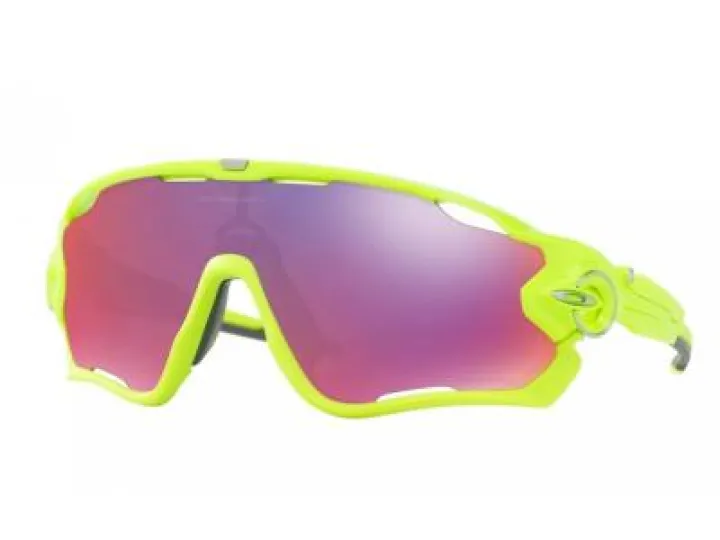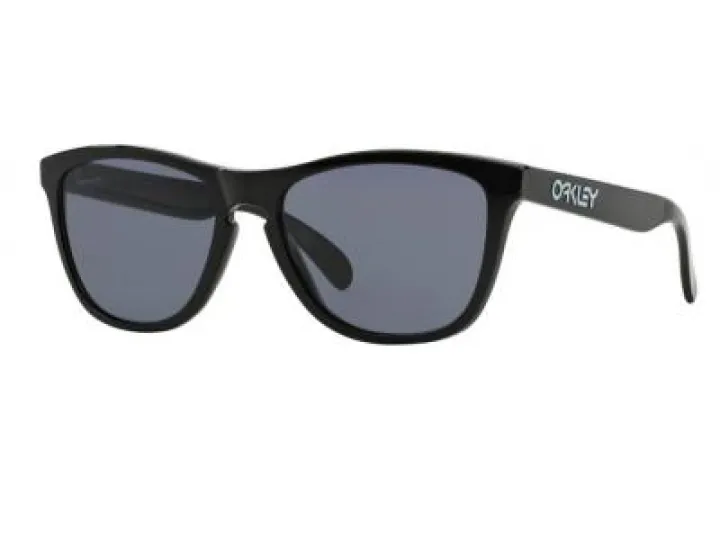Oakley technology and what it all means
The Oakley brand, probably more than any other, claims to be at the forefront of sunglasses manufacturing technology.
As a leading sports and lifestyle brand, Oakley tries to stay at the cutting edge of performance and design, boasting more than 600 patents worldwide.
And Oakley has a penchant for space-age terminology when promoting the brand's innovative products – from nose-pads manufactured in 'Unobtanium' and frames forged from 'O-Matter' to lenses cut from 'Plutonite' and incorporating such delights as 'Prizm' optics.
To the everyday consumer, this tech-speak and these weird-sounding materials can seem more like crass marketing ploys than genuine innovative technologies.
But Oakley insists it spends millions of dollars on perfecting its products and boasts a steadfast commitment to excellence through innovation.
For those baffled by the overblown marketing terms and less than enthusiastic about finding out what the words actually mean we offer a short but hopefully revealing rundown of what it all signifies.
Oakley Glasses Lenses
Lens technology has long been the mainstay of Oakley's research. Company founder Jum Jannard was obsessed with innovation and coined his most famous saying "Everything in the world can and will be made better." Oakley seems bent on nailing down problems, finding solutions and marketing them with resolve. This philosophy has made Oakley one of the most famous glasses brands in the marketplace.
Plutonite™ Lenses
Oakley says Plutonite is one of the most optically pure materials currently available in eyewear lens manufacture. It's a very high-grade polycarbonate, free of all impurities, and lenses made from Plutonite have 100% UVA, UVB, & UVC protection built into the fabric of the lens rather than applied as a coating and Plutonite can block all blue light up to 400nm. Another feature of Plutonite lenses is its high impact resistance and proof against shattering.
High Definition Optics®
HDO is a whole array of patented technologies that enable Oakley eyewear to meet or exceed the test standards of the American National Standards Institute for optical clarity, visual fidelity, and impact resistance. Oakley claims less distortion in magnified images, a particular problem in lenses with a high base curvature, by correcting for refraction as measured by the ANSI Z87.1 standard for optical performance
XYZ Optics™
Oakley lenses are cut from a single sheet of material along the same axes to ensure they are in perfect optical alignment. Oakley also tapers the lens thickness from the centre to the edge giving lower light refraction at the periphery and compensating for the overall prismatic effect of the lens curvature. Oakley calls this production stage XYZ Optics and claims the carefully shaped lens not only provides greater clarity but also helps reduce eye strain.
HDPolarized® Lenses
HDPolarized lenses filter out 99% of reflected glare without the haze and optical distortion that can be found with polarised lenses made using conventional manufacturing techniques. Many polarised lenses are composed of laminated glue-bonded layers that can reduce clarity and exaggerate distortion. Oakley's infusion moulding process produces a single-layered lens for crisp and clear vision. Also, both lenses in a pair of Oakley sunglasses are cut at the same time to align and centre the axis of polarisation.
Prizm™ Lenses
Prizm™ is a lens optics technology that is the outcome of years of colour science research by Oakley. Prizm lenses are fine-tuned to control the light transmission for specific environments and to help maximise contrast. So there are different Prizm Lenses for various conditions. Prizm lenses have distinct peaks in their light transmission profile which increase contrast around specific wavelengths. The most popular types are Prizm Road that helps cyclists spot subtle changes in road textures, Prizm Trail which enhances reds and browns in the shade and bright light and Prizm Golf which improves contrast to improve depth perception.
Iridium® Lens Coatings
Superheated metallic oxides are fused to the lens at the molecular level to create a uniform filtering layer that optimises contrast and minimises glare. Iridium coatings are formulated for optimal balance between light reflection, transmission and absorption, depending on the targeted environment.
Oakley Glasses Frames
O-Matter™
Many Oakley sunglasses use the stress-resistant frame of nylon-infused plastic that the company dubs O-Matter. It's lightweight, durable and can withstand heat and cold without becoming brittle. The flexibility enhances impact resistance and helps to make these glasses more comfortable to wear for extended periods. Because O-Matter is also less rigid than other plastics, it shapes better to the head.
C-5 Alloy®
C-5 alloy is a blend of five metal compounds that helps combine toughness with flexibility. The alloy bends easily to soak up impact and springs back into shape afterwards. This versatility makes it useful for creating lightweight frames of thin metal, and C-5 competes with titanium for weight and scratch resistance. Oakley uses this material in their delicately-sculptured wireframe glasses which have deceptively high durability despite their thin, lightweight construction.
X-metal®
X-Metal is a titanium alloy used on some of Oakley's all-metal frames. Very light but with a high strength to weight ratio, X-Metal frames are said to be composed of 25 pieces and designed so that some parts of the frame flex easily while other parts stay rigid.
Oakley Glasses Components
Unobtanium®
Wikipedia describes unobtainium as any fictional, extremely rare, costly, or impossible material. The term was picked up by Oakley's founder Jim Jannard in 1975 to describe an innovative hydrophilic material used to make a motorcycle handlebar grip that readily absorbs water and doesn't become slippery when wet. Oakley uses its Unobtanium on nose pads and ear socks of its glasses to increase 'tackiness' as the wearer perspires so the glasses stay in place even in hot, sticky conditions.
Three-Point Fit®
The patented Oakley frame architecture essentially does away with the hook around the ear that traditionally holds glasses in place. Contact is made only at the bridge of the nose and the sides of the head ensuring a secure fit without touching the ears. It seems to work, with athletes testifying to the fact the sunglasses don't slip even with fairly violent head shaking.
Wrapping it all up
Oakley is both a sports performance and lifestyle brand with a reputation built on scores of innovative improvements to its many models. Thousands of professional and amateur athletes use Oakley products because they regard them as the best that the industry has to offer.
Those attracted by the lifestyle designer sunglasses models can also buy into a cool brand safe in the knowledge that the sunglasses Oakley designer eyewear is more than just a fashion accessory and confident that they the street-cool styles will also be at the forefront of technological advance.
The combination makes for a heady mix of style and performance that has helped to make Oakley one of the leading sports performance and fashion brands in the world.



